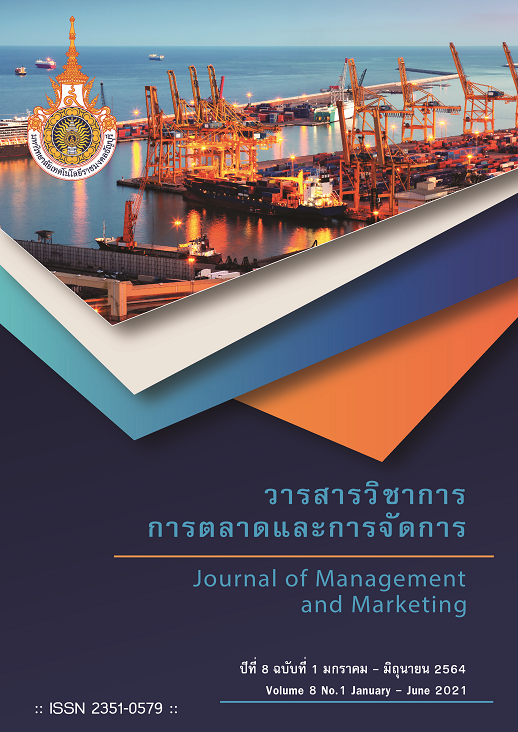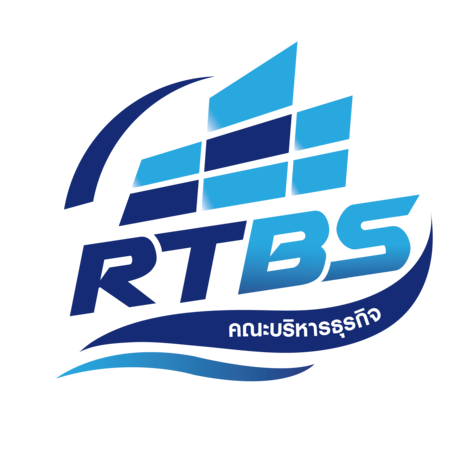กลยุทธ์การตลาดสีเขียวเชิงสร้างสรรค์และการสร้างคุณค่าร่วมสู่ความสำเร็จในธุรกิจท่องเที่ยวโดยชุมชนนครศรีธรรมราช
คำสำคัญ:
กลยุทธ์การตลาด, การตลาดสีเขียว, การสร้างคุณค่าร่วมสู่ความสำเร็จ, การท่องเที่ยวโดยชุมชนบทคัดย่อ
การวิจัยมีวัตถุประสงค์เพื่อ (1) ศึกษาระดับกลยุทธ์การตลาดสีเขียวการสร้างคุณค่าร่วมและความสำเร็จในธุรกิจนำเที่ยวโดยชุมชนนครศรีธรรมราช (2) ศึกษารูปแบบกลยุทธ์การตลาดสีเขียวและการสร้างคุณค่าร่วมสู่ความสำเร็จในธุรกิจนำเที่ยวโดยชุมชนนครศรีธรรมราชและ (3) พัฒนารูปแบบกลยุทธ์การตลาดสีเขียวและการสร้างคุณค่าร่วมสู่ความสำเร็จในธุรกิจนำเที่ยวโดยชุมชนนครศรีธรรมราช ใช้วิธีการสุ่มตัวอย่างแบบเจาะจงและใช้วิธีการสุ่มตัวอย่างแบบสะดวก การวิเคราะห์ข้อมูลใช้สถิติพรรณนา ได้แก่ แจกแจงความถี่ ค่าร้อยละ และส่วนเบี่ยงเบนมาตรฐาน และการวิเคราะห์สถิติ เชิงอนุมานด้วย t-test, One-way ANOVA (Welch, F-test) และ Multiple Regression Analysis
ผลการวิจัย พบว่า ผลิตภัณฑ์มาจากวัสดุธรรมชาติ บรรจุภัณฑ์สามารถนำกลับมาใช้ใหม่ และย่อยสลายได้ การผลิตต้องได้มาตรฐาน ปลอดภัย การเลือกใช้วัตถุดิบในท้องถิ่นเพื่อก่อให้เกิดรายได้และการสร้างมูลค่าเพิ่มให้แก่ชุมชน เน้นการมีส่วนร่วมและส่งเสริมการท่องเที่ยวในชุมชน
เอกสารอ้างอิง
กัลยา วานิชย์บัญชา. (2551). การวิเคราะห์สถิติขั้นสูงด้วย SPSS for Windows. กรุงเทพฯ:จุฬาลงกรณ์มหาวิทยาลัย.
กัลยวันต์ สวนคร้ามดี และ เดชรัต สุขกำเนิด. (2558). การวิเคราะห์การจัดกลุ่มผู้บริโภคตามพฤติกรรมที่เป็นมิตรต่อสิ่งแวดล้อม. วารสารวิชาการ มหาวิทยาลัยธนบุรี, 9(18), 21 - 25.
กาญจน์ศิตา กรพัชร์พรสกุล และพิพัฒน์ นนทนาธรณ์. (2559). อิทธิพลของผู้บริโภคสีเขียวและจิตสาธารณะที่ส่งผลต่อความตั้งใจซื้อผลิตภัณฑ์. วารสารสมาคมนักวิจัย, 21(3), 123 - 131.
กุหลาบ กิมศรี. (2557). ปัจจัยเชิงสาเหตุที่มีอิทธิพลต่อความตั้งใจซื้อผลิตภัณฑ์อาหารที่ยั่งยืน. (วิทยานิพนธ์ปริญญามหาบัณฑิต, มหาวิทยาลัยเกษตรศาสตร์).
คุณาวุฒิ เทียมทอง. (2546). แนวคิดของเทคโนโลยีสะอาด. สืบค้นจาก http://www.thaienvironment.net.
ณัฐกนก รัตนางกูร. (2552). การศึกษาปัจจัยทางการตลาดที่มีอิทธิพลต่อการตัดสินใจซื้อสินค้าที่เป็นมิตรกับสิ่งแวดล้อมของผู้บริโภคในเขตกรุงเทพมหานคร. (วิทยานิพนธ์ปริญญา มหาบัณฑิต, มหาวิทยาลัยกรุงเทพ).
ดารกา ไตรรัตน์วงศ.์ (2550). ปัจจัยที่มีผลกระทบต่อการตัดสินใจซื้อสินค้าทางการตลาดเพื่อ สิ่งแวดล้อมของเจนเนเรชั่นวาย. (วิทยานิพนธ์ปริญญามหาบัณฑิต, มหาวิทยาลัย เทคโนโลยีสุรนารี).
ตระกูลพันธ์ พัชรเมธา. (2557). การออกแบบผลิตภัณฑ์ที่เป็นมิตรต่อสิ่งแวดล้อม. วารสาร มหาวิทยาลัย ศิลปากร, 34(1), 119 - 135.
ตรีทิพ บุญแย้ม. (2554). รูปแบบการบริโภคสีเขียว. สืบค้นจาก https://www.bu.ac.th/knowledgecenter/executive_journal/oct_dec_10/pdf/aw3.pdf
ธัญปวีณ์ รัตนพงศ์พร. (2553). แบบจำลองพฤติกรรมการซื้อผลิตภัณฑ์ที่มิตรต่อสิ่งแวดล้อมของ ผู้บริโภค. (วิทยานิพนธ์ปริญญาดุษฎีบัณฑิต, มหาวิทยาลัยรามคำแหง).
นันทนา บุญเฮง. (2553). ปัจจัยสู่ความสำเร็จของผู้ประกอบการธุรกิจเบเกอรี่ในเขต กรุงเทพมหานคร. (การศึกษาค้นคว้าอิสระปริญญามหาบัณฑิต, มหาวิทยาลัยสุโขทัยธรรมาธิราช).
นิศาชล ลีรัตนากร. (2556). รูปแบบการบริโภคสีเขียวของผู้บริโภคในจังหวัดเชียงใหม่. (วิทยานิพนธ์ปริญญามหาบัณฑิต, มหาวิทยาลัยแม่โจ้).
ปวีณ์กร แก้วบุตร. (2556). พฤติกรรมการเลือกซื้อผลิตภัณฑ์ที่เป็นมิตรกับสิ่งแวดล้อมของนักศึกษา ระดับปริญญาตรี คณะเศรษฐศาสตร์ มหาวิทยาลัยเชียงใหม่. การค้นคว้าอิสระปริญญา มหาบัณฑิต, มหาวิทยาลัยเชียงใหม่).
ปารมี พัฒนุดล และ วิโรจน์ เจษฎาลักษณ์. (2559). ปัจจัยที่มีผลต่อการตั้งใจซื้อผลิตภัณฑ์เพื่อ สิ่งแวดล้อมของผู้บริโภค อำเภอปากเกร็ด จังหวัดนนทบุรี. Veridian E-Journal, 9(2), 857 - 872.
พิทยา ศิริ. (2556). ปัจจัยสู่ความสำเร็จของผู้ประกอบการวิสาหกิจขนาดกลางและขนาดย่อมในจังหวัดสงขลา. (วิทยานิพนธ์ปริญญามหาบัณฑิต, มหาวิทยาลัยสุโขทัยธรรมาธิราช).
เพ็ญจันทร์ ตันติวิมลขจร. (2552). ปัจจัยความสำเร็จของธุรกิจขนาดกลางและขนาดย่อม: กรณีศึกษา เขตพื้นที่ภาษีเจริญกรุงเทพมหานคร. (การศึกษาค้นคว้าอิสระปริญญา มหาบัณฑิต, มหาวิทยาลัยสุโขทัยธรรมาธิราช).
มันทนาภรณ์ พิพิธหิรัญการ. (2554). ปัจจัยนำเข้าปัจจัยเอื้อและปัจจัยเสริมแรงที่มีผลต่อความ ตั้งใจซื้อสินค้าที่เป็นมิตรต่อสิ่งแวดล้อม. ใน ประชุมวิชาการระดับชาติ UTCC Academic Week ประจำปีการศึกษา 2553. กรุงเทพฯ: มหาวิทยาลัยหอการค้าไทย.
ศิริวรรณ เสรีรัตน์ และคณะ. (2541). การบริหารการตลาดยุคใหม่. กรุงเทพฯ : เพชรจรัสแสงแห่งโลกธุรกิจ.
ศิริวรรณ เสรีรัตน์. (2546). พฤติกรรมผู้บริโภค. กรุงเทพฯ: ไทยวัฒนาพานิช.
สันทนา อมรไชย. (2552). ผลิตภัณฑ์สีเขียวเพื่อสิ่งแวดล้อมที่ยั่งยืน. วารสารกรมวิทยาศาสตร์บริการ, 57(179), 29 - 36.
อนุวัต สงสม. (2555). การตลาดสีเขียว: มโนทัศน์ และพฤติกรรมผู้บริโภค. วารสารวิชาการคณะมนุษยศาสตร์และสังคมศาสตร์, 8(1), 65 - 84.
Arseculeratne, D., & Yazdanifard, R. (2014). How Green Marketing can Create a Sustainable Competitive Advantage for a Business. International Business Research, 7, 130 - 137.
Chen, Y. S. (2010). The drivers of green brand equity: green brand image, green satisfaction and green trust. Journal of Business Ethics, 93(1), 307 - 319.
Drucker, P. (2010). The Practice of Management. New York: Harper and Row.Esty, D. C., & Simmons, P. J. (2011). The Green to Gold Business Playbook: How to Implement Sustainability Practices for Bottom-Line Results in Every Business Function. Hoboken, NJ: Wiley.
Grundey, D., and Zaharia, RM. (2008). Sustainable Incentives in Marketing and Strategic Greening: the Cases of Lithunia and Romania. Technological and Economic Development, 14(2), 130 - 143.
Habibollah, K., Abolghasem, E. & Ahmad, A. (2015). An analysis of the green response of consumers to the environmentally friendly behaviour of corporations. Iranian Journal of Management Studies, 8(3), 315 - 334. doi: 10.22059/IJMS.2015.53632
John. (2007). Strategic Management of Private School: Recruitment, Compensation. Development and Retention of Teachers. Retrieved from http//:ProQuest.umi.com.20 February 2018.
Kaplan, Robert S., and Norton David P. (1996 a). The Balanced Scorecard: Translating Strategies into Action. Boston: Harvard Business School.
Kontic, I. & Biljeskovic, J. (2010). Greening the marketing mix: a case study of the Rockwool Group. Retrieved from https://www.diva-portal.org/smash/get/diva2:329044/fulltext01.pdf
Peattie, K. (2008). Environmental marketing management. UK: Pitman Publishing Corp.
Porter, M. E. & Linde, C. vander. (1995). Green and competitive: ending the stalemate. Harvard Business Review, 73(5), 120 - 134.
Rokka, J., & Uusitalo, L. (2008). Preference for green packaging in consumer product choices - Do consumers care?. International Journal of Consumer Studies, 32(5), 516 - 525.
Schiffman, L.G. and Kanuk, L.L. (1994). Consumer behavior. Englewood Cliffs, New Jersey, USA: Prentice-Hall.
ดาวน์โหลด
เผยแพร่แล้ว
รูปแบบการอ้างอิง
ฉบับ
ประเภทบทความ
สัญญาอนุญาต
บทความที่ได้รับการตีพิมพ์เป็นลิขสิทธิ์ของ ผู้นิพนธ์
ข้อความที่ปรากฏในบทความแต่ละเรื่องในวารสารวิชาการเล่มนี้เป็นความคิดเห็นส่วนตัวของผู้เขียนแต่ละท่านไม่เกี่ยวข้องกับมหาวิทยาลัยเทคโนโลยีราชมงคลธัญบุรี และคณาจารย์ท่านอื่น ในมหาวิทยาลัยฯ แต่อย่างใด ความรับผิดชอบองค์ประกอบทั้งหมดของบทความแต่ละเรื่องเป็นของผู้เขียนแต่ละท่าน หากมีความผิดพลาดใดๆ ผู้เขียนแต่ละท่านจะรับผิดชอบบทความของตนเองแต่ผู้เดียว









